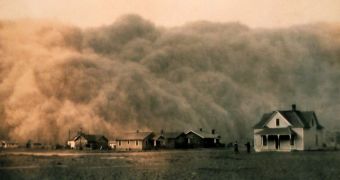Dust in our planet's atmosphere is one of the most important factors dictating a multitude of processes going on over extended periods of time. These fine particles, which originate in the deserts of Sahara and the Middle East, have the ability to influence the long-term trend of global warming, and can also have an impact on the way the chemical carbon is being circulated on the planet. Additionally, larger or lower amounts of dust can also affect the world's oceans in a variety of manners. The influence of dust will be more accurately explained in a new conference, PhysOrg reports.
Simon Fraser University researcher Dr. Karen Kohfeld will be speaking about the challenges, issues and benefits associated with dust at the annual meeting of the American Association for the Advancement of Science (AAAS), which is held in San Diego. Her work has been founded by the Natural Sciences and Engineering Research Council (NSERC) of Canada. The expert's main focus of research is the paleo-climate, which is an area of climatology that deals with scanning past weather records inscribed in stones and other deposits to assess the accuracy of predictive models for the future.
Kohfeld, who is also the SFU climate, oceans and paleo-environments laboratory leader, says that understanding old geological data is absolutely essential to modeling climate change in the future. She is one of the inventors of the Dust Indicators and Records of Terrestrial and Marine Palaeoenvironments (DIRTMAP) database, which has become in the last ten years a reference point for other investigators looking to test if their dust models are accurate. “It has been used to demonstrate that both increases in winds and decreases in vegetation cover were important contributors to the dustiness of the last ice age,” Kohfeld explains.
“Dust is a really good example of how land, atmosphere and climate are connected. AAAS is a nice place to see where research is going, and it brings together experts in the field to discuss these things,” the investigator says. During the “Dust in the Earth System" sympozium, the scientist also wants to cover the health effects that the exposure to high concentrations of dust has on humans. This is an area that has been heavily researched once pollution started being felt around the clock in major cities, several decades ago.

 14 DAY TRIAL //
14 DAY TRIAL //